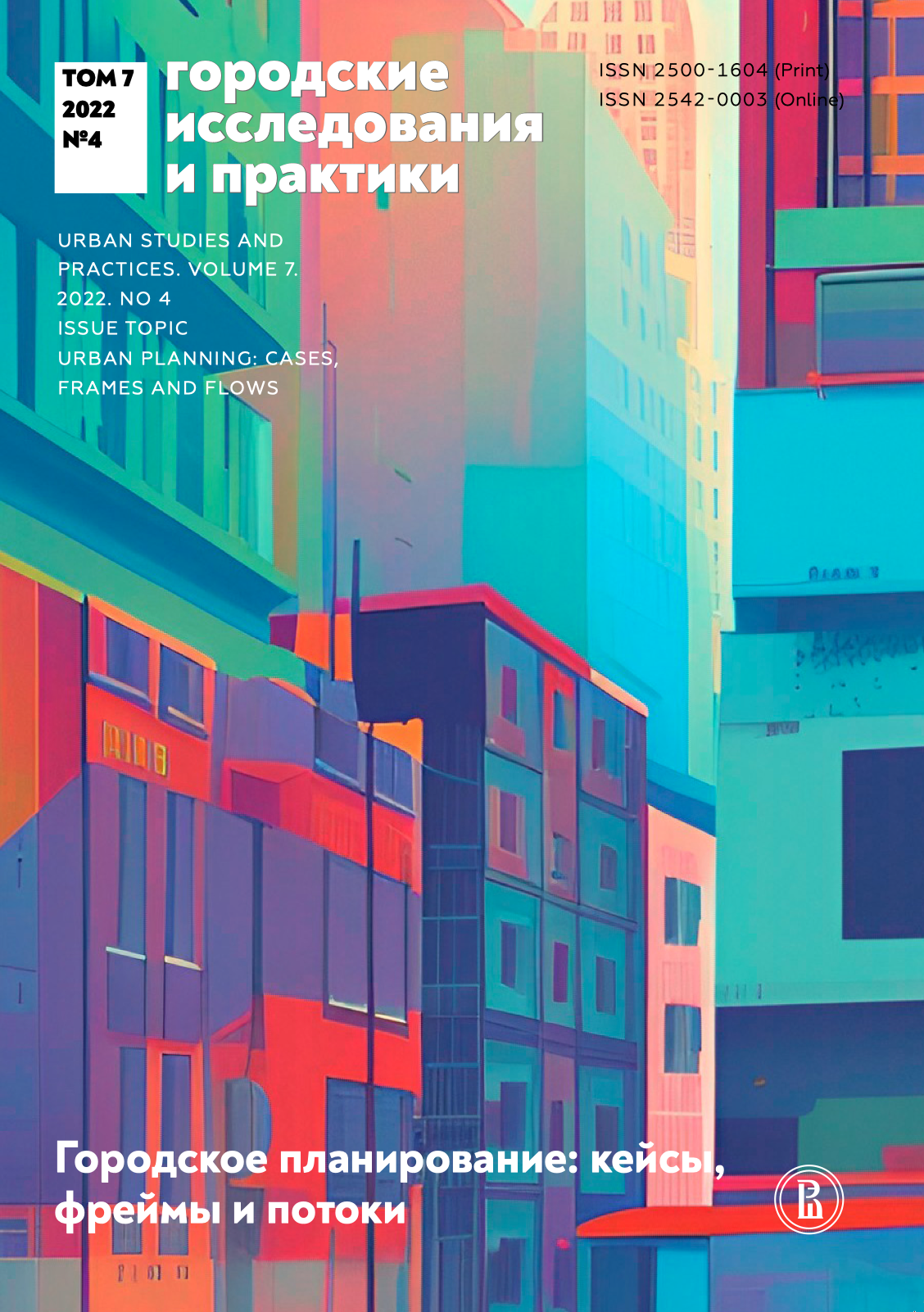Revealing the Planning Specificity of Moscow in Gutnov’s 1986 Perspective Development Conception
Abstract
This article is devoted to the urban planning of the Russian capital presented in “The Conception of the Long-term development of Moscow and Moscow Region”. This project was developed at the Moscow Genplan Institute under the leadership of Alexei Gutnov and preceded the unapproved general plan of 1989. The Conception was forgotten after perestroika, but in its methodology it made a fundamental transition from a "normative" city to an "evolutionary" one and opened the way for the system of urban planning regulation which became part of the master plan of Moscow in 1999. The Conception tested the hypothesis that the structural and planning specifics of the city are most clearly manifested under the influence of the mechanisms of its self-organization. In a formalized way, these mechanisms were expressed in terms of the carcass-fabric urban model, determining the specifics of Moscow. The article discusses the methodological foundations of planning urban structure of the city in The Conception. They are analyzed from the point of view of identifying the prerequisites for the formation of design solutions ensuring the evolutionary nature of the development of the city. The role of modeling of urban planning systems using computers in planning for the spatial structure of Moscow is also revealed.
Downloads
References
Баевский О. А. (2013) Меняющиеся парадигмы градостроительного развития Москвы // Преемственность в переменах. 400 лет градостроительных планов Москвы. М.: НИиПИ Генплана Москвы.
Баевский О. А., Гостев М. В. (2021) Генплан, которого не было. Концепция перспективного развития Москвы Алексея Гутнова // Проект Россия. No 98. С. 237–262.
Баевский О. А., Гостев М. В. (2022) Пределы контроля: о началах построения системы градостроительного регулирования в Москве (1990–1994) // Проект Россия. No 100. С. 66–76.
Гостев М. В. (2018) Об эвристической природе моделей эволюционного городского развития // Городские исследования и практики. Т. 3. No 1. С. 7–22.
Гутнов А. Э. (1977) Город как объект системного исследования // Системные исследования. Ежегодник 1977. М.: Наука. С. 212–236.
Гутнов А. Э. (ред.) (1986) Научное обоснование методики разработки генерального плана и основных положений концепции перспективного развития Москвы (заключительный отчет). М.: НИиПИ Генплана Москвы.
Гутнов А. Э. (1984) Эволюция градостроительства. М.: Стройиздат.
Гутнов А. Э., Глазычев В. Л. (1990) Мир архитектуры: Лицо города. М.: Молодая гвардия.
Гутнов А. Э., Лежава И. Г. (1977) Будущее города. М.: Стройиздат.
Данюшевский Б. (1986) Московские этажи // Смена. No 16 (1422). С. 1–3.
Каверин А. Р., Арпишкин Ю. П., Гребенщиков И. В., Медведева Л. В., Романов Г. Г. (2019) ПОЛИЦЕНТР: модель размещения мест труда, проживания и обслуживания // Городские исследования и практики. Т. 4. No 4. С. 42–69.
Ревзин Г. И. (2012a) Генплановая отставка // Коммерсантъ-Власть. No 29. 23.07.2012.
Ревзин Г. И. (2012b) Урбанисты, неспокойные сердца // Отечественные записки. No 3 (48).
Савченко А. Б. (ред.) (2013) Преемственность в переменах. 400 лет градостроительных планов Москвы. М.: НИиПИ Генплана Москвы.
Ткаченко С. Б. (2019) Один век московского градостроительства: в 2 т. Книга первая. Москва советская. М.: Прогресс-Традиция.
Юдинцев В. П. (2019) После НЭРа. Генплан Москвы-89 // Архитектурный Вестник. No 3.

